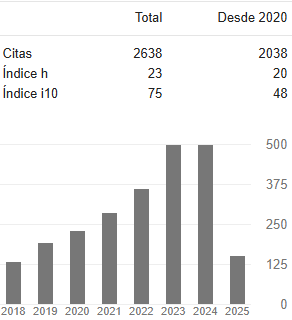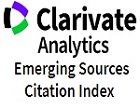Análisis Biomecánico de Marcha Humana a Través de Técnicas de Modelaje
DOI:
https://doi.org/10.31908/19098367.663Palabras clave:
Caminata bípeda, Dinámica de marcha, Análisis de marcha, modelajeResumen
Con el fin de lograr una ampliación del conocimiento teórico de la caminata humana que permita desarrollar mejores elementos como prótesis y órtesis, en este trabajo se planteó como objetivo principal realizar una exploración del uso de diferentes técnicas de modelamiento y/o simulación tales como los métodos de:
dinámica lagrangiana, gráficos de unión y simuladores dinámicos computacionales, como alternativa al modelamiento clásico con ecuaciones diferenciales.
Descargas
Referencias
SCHIEHLENA, W. and GARCÍA-VALLEJO D. Walking dynamics from mechanism models to parameter optimization, Procedia IUTAM 2 (2011), pp 199–211.
MATTHIJSSE P.C and BREEDVELD P.C., Modeling and simulation of human gait in three dimensions with multibond graphs, Journal of Biomechanics, Volume 22, Issue 10, 1989, pp 1052
WOJCIK, L. Modeling of musculoskeletal structure and function using a modular bond graph approach. Journal of the Franklin Institute 340 (2003) 63–76
BOUTINA, L. EONA, A, ZEGHLOULA S. and LACOUTUREA, P. From human motion capture to humanoid locomotion imitation Application to the robots HRP-2 and HOAP-3, Robotica, Vol 29, Issue02 / March 2011, pp 325-334
PRATT, J. E. (2000). Exploiting Inherent Robustness and Natural Dynamics in the Control of Bipedal Walking Robots. Ph.D. Thesis, MIT.
KARNOPP, D.C., MARGOLIS, D.L., y ROSENBERG, R.C. (1975) System Dynamics: a Unified Approach, 2nd ed., John Wiley & Sons, Inc., New York, NY.
KHAJEPOUR A., HUISSOON J.P. Modelling and simulation of human gait using multiband graphs. University of Waterloo. Department of mechanical engineering and Kinesiology). http:// scitation.aip.org/getabs/servlet/GetabsServlet?prog=normal&id=JBE NDY000125000004000490000001&idtype=cvips&gifs=yes
ROA, M.A. (2004). Modelamiento y simulación de la caminata bípeda. Tesis de maestría en automatización industrial, Facultad de Ingeniería, Universidad Nacional de Colombia, Sede Bogotá, p. 250.
VERA, C. y FELEZ J. Dinámica vehicular basada en la teoría de Bond-Graph. Madrid, Universidad Politécnica de Madrid, 1994, p. 446. [1] Rojas, Ana y J. García. Reforma Universitaria y Sociedad. Revista Cubana de Educación Superior. Vol XI, No. 3, 1993. p.124.
POP, C. Bondgraphs Modelling and Model Evaluation of Human Locomotion Using Experimental Data. University Of Waterloo. Extraido del world wide web: http://www. me.uwaterloo.ca/~jph/ pubs/bondgraph.pdf.
SÁNCHEZ LACUESTA, J. y PRAT, J. 1994. Biomecánica de la Marcha Humana Normal y Patológica. Instituto de Biomecánica de Valencia – IBV.
Descargas
Publicado
Número
Sección
Licencia
Derechos de autor 2019 Entre Ciencia e Ingeniería

Esta obra está bajo una licencia internacional Creative Commons Atribución-NoComercial 4.0.



















